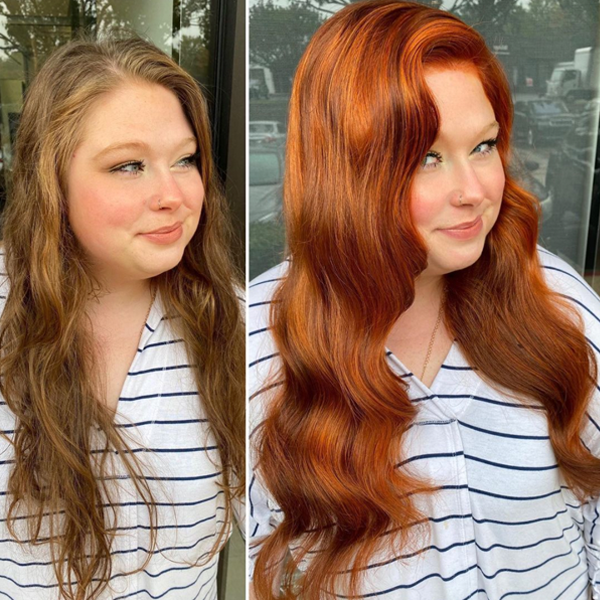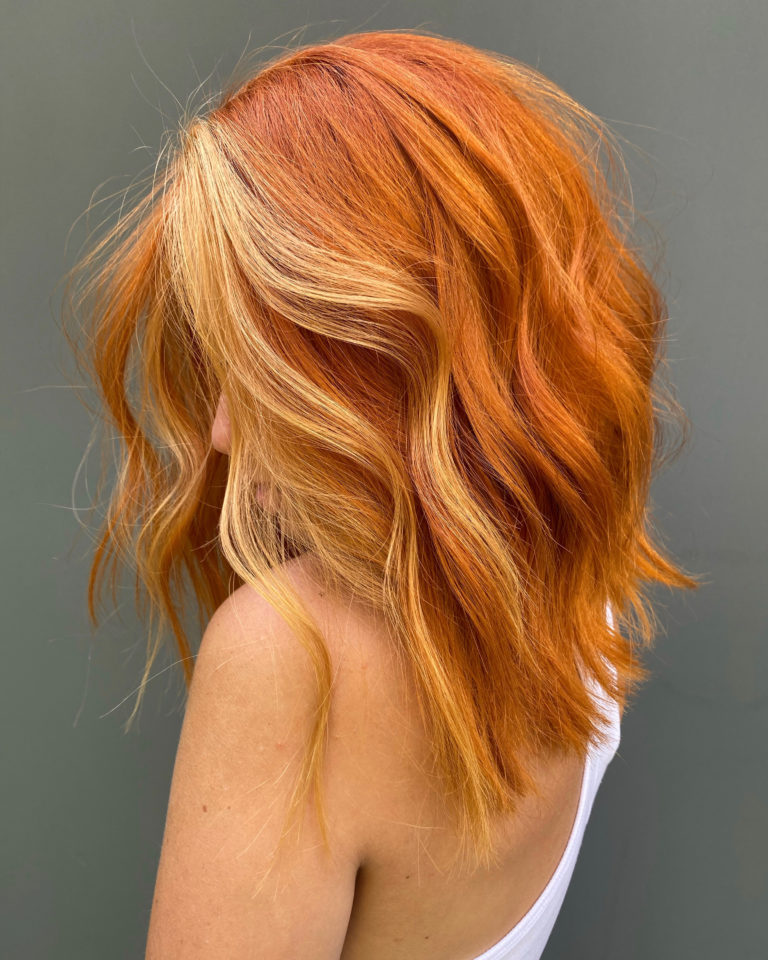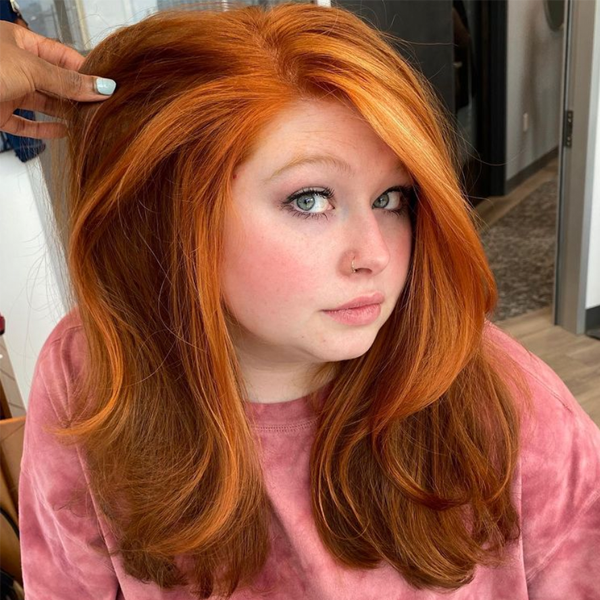Formulating Reds? Do This To Avoid Muddy Tones
5 Tips To Get The Red Shade Your Client Desires
Any colorist knows that formulating reds isn’t easy. A huge issue a lot of beginner (and even veteran) stylists run into is getting a muddy result, which can be caused by a few different formula mistakes. So we asked BTC Team Member Kelley Brandon (@kelleyscanvas) and Visual Editor Megan Schipani (@shmeggsandbaconn) how they achieve flawless, insta-worthy red tones that always get a double tap.
CLICK HERE to learn more about the Schwarzkopf Professional IGORA ROYAL collection Kelley used!
Alternate Formulas & Developers
Want to know the biggest mistake stylists make when formulating reds, besides muddy hues? It’s only using one formula for the entire head. Megan recommends avoiding one dimensional hair by “formulating the base a level darker or adding a small amount of a neutral or ash into the base to give it a deeper tone.”
Another tip: Lower the developer at the roots, because the heat from the scalp will naturally accelerate the process.
Check Out This Gorgeous Transformation Kelley Did! Tap The Beaker For The Formulas!


Keep Underlying Pigments In The Hair
“To achieve warmer reds I believe in keeping the underlying pigments in the hair,” says Kelley. “If you lift past these, you are removing the underlying warmth needed to achieve a warm red.”
Megan adds that it’s important to also remember how the underlying pigments will show up after the hair is lifted when formulating. “For example, say you are working with a Level 5 and want a cool Level 7 red. Remember that when lifting to a seven, you are working with underlying orange tones,” she says.
“So when you formulate, chose a red with a blue or violet base, like Schwarzkopf Professional IGORA VIBRANCE® or ROYAL 7-88 mixed with a little 0-99 violet additive. Or, you can utilize the additives in IGORA ROYAL, 0-22 and 0-11, which are anti-orange and anti-yellow.”
Love This Pumpkin-Inspired Hue From Megan? Grab The Steps Here!


Add Gold To The Formula
To avoid getting a muddy finish, Kelley recommends adding gold to the formula. “In my final glaze I add a bit of yellow [pigment] to give a warmer, reflective hue.”
Cool Down Red With Violet
Wondering how to achieve a deep, cool red hue? Try this! “I like to use a bit of violet in my cool red formulas,” Kelley remarks. When in doubt, remember to always reference the color wheel.
Avoid Adding Too Much Neutral
Did you know too much neutral can ruin your reds? Megan says that it might not look that way at first, but if the hair quickly fades to a brownish tone then there wasn’t enough red in your formula.
Same Client, New Look! Tap The Beaker For The Formulas & Click Here For The Steps!


More from
Schwarzkopf Professional®
-
Shampoos
Purple vs. Blue Shampoo: It’s More Than Color Theory, Here’s Why
-
Copper
Muted Bronze
-
Monthly Product Launch List
The Best Hair Launches Of March 2024
-
Hair Color
IGORA ZERO AMM Permanent Color
-
Celebrity
The Best Beauty Looks At The 2024 Oscars
-
Blonde
Sydney Sweeney’s Dark Suede Blonde
-
Celebrity
Schwarzkopf Professional® Launches Campaign Spearheaded By Chris Appleton & Sofia Vergara
-
Styling
OSiS® Upload
-
Celebrity
Sofia Vergara’s Red Carpet Glam Waves
-
BTC Hair Trend Report
Schwarzkopf Professional® Announces Chris Appleton As New Global Color Ambassador
-
Blonde
Virgin To Dimensional Blonde Blend
-
Monthly Product Launch List
11 New Game-Changing Hair Launches To Add To Your Arsenal
-
Blonde
The Biggest Hair Color Trends of 2024
-
BTC Hair Trend Report
The Biggest Haircut Trends of 2024
-
Brunette
Rich Beige Brunette
-
Celebrity
Paris Hilton’s Classic Blonde
-
Blonde
Dove Cameron’s Brunette-To-Blonde Color Correction
-
Celebrity
Sofia Vergara’s ’80s-Inspired Red Carpet Waves
-
Industry News
Sofia Vergara is Schwarzkopf Professional®’s New Global Brand Ambassador
-
Styling
OSiS+® Grip Mousse
-
Hairsprays
OSiS+® Freeze
-
Styling
OSiS+® Dust It
-
Brunette
Caramel Chocolate Brunette With Gray Coverage
-
Awards Shows
The Best Celebrity Hair Colors & Formulas From The 2024 Golden Globes







